Tasty herb spiral
One of the best choices you can make for growing food, particularly in a very limited space, is herbs. With just a few feet of bed space, you can grow all the herbs you'll need. Imagine never having sage going bad in your crisper - ever again. When you need an herb, you just pick it. No pesticides, no shipping, no trips to the grocery store.
An herb spiral is a particularly fun way to grow lots of herbs. You'll need a space about three feet on each side, lots of differently sized rocks, fill dirt, garden soil and fine mulch. Plus your plants and seeds.
We have a garden bed that gets full sun until about 2 p.m. and ends right at the foot of the kitchen stairway. Now, here's how we did it:
Here is the space, with an ideal Fibonacci spiral drawn for our guide.
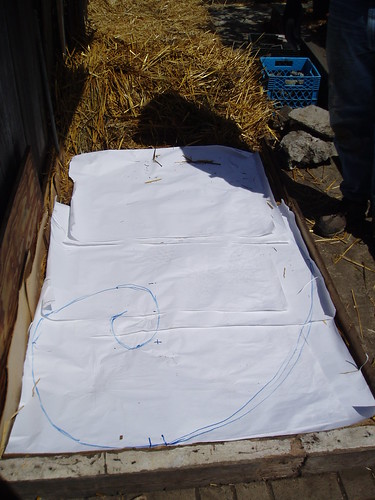
With a vast quantity of urbanite (salvaged concrete pieces) and clay soil we'd excavated nearby, we built the basic mound.
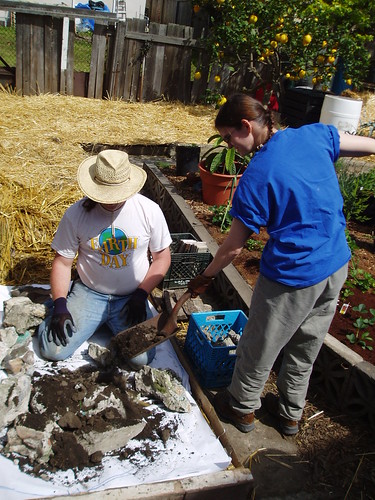
And built.
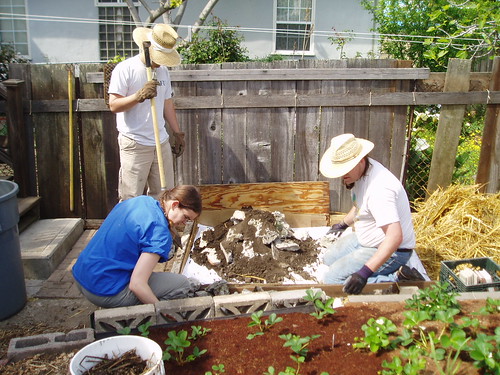
It can take some work to get the shape right.
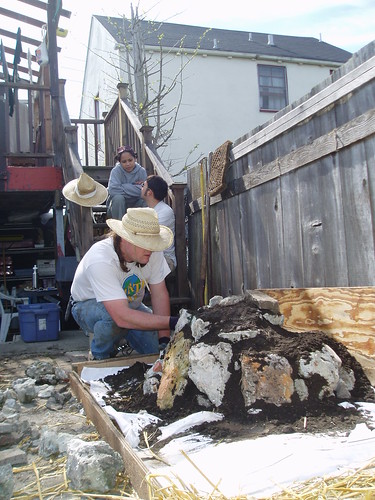
Then we could add soil.
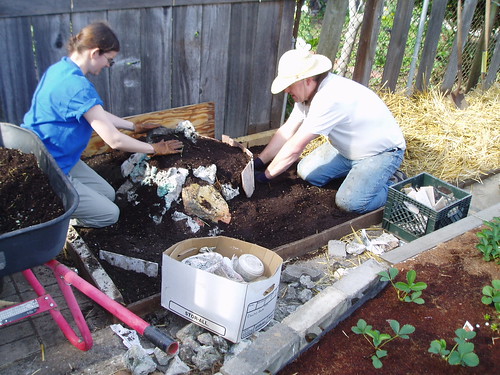
And plants. We planted parsley, purple sage, variegated sage, thyme, lemon thyme, oregano, tarragon and chives, then seeded cilantro, dill, caraway, more parsley, garlic chives and arugula.
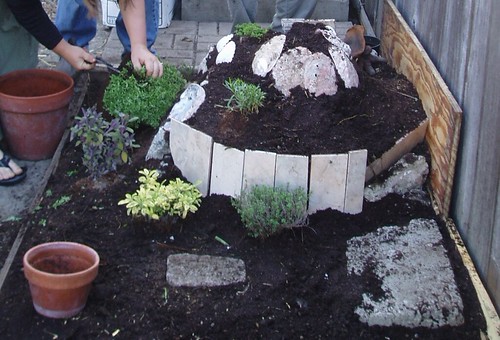
Then we mulched with coconut pith and patted the last details into shape. And it was done.
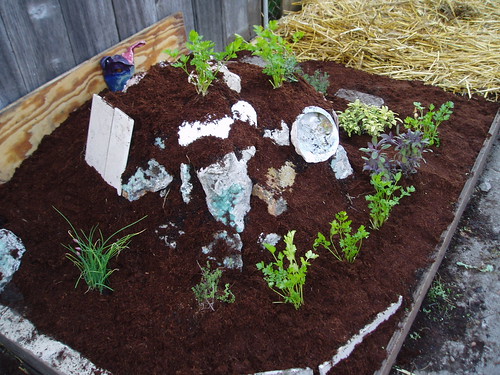
This is just one example. Your herb spiral will reflect your unique culinary and artistic sensibilities, as well as the materials on hand. When you decide where to plant your herbs, remember that the different parts of the circle will have different microclimates (really micro). For example, the north side will be shady, so it's a good place to plant annual herbs that tend to bolt (flower prematurely), like cilantro and basil. The south side is for ferocious sun lovers like sage. If you plant perennials like rosemary and marjoram that tend to bush out, make sure to keep them pruned down, or they'll take over the whole spiral.
Remember: don't bother planting herbs that you don't like, even if you already have them or they're easy to grow. If you won't eat it, don't grow it. Save the space for something you will eat.
We're also planning to install drip irrigation, when we do the rest of the garden. It saves time, energy and water. But I'll still be out there every day, harvesting, weeding (well, less and less weeding now that we have everything sheet mulched) and tending the plants.
Labels: food, permaculture, spring


0 Comments:
Post a Comment
Subscribe to Post Comments [Atom]
<< Home